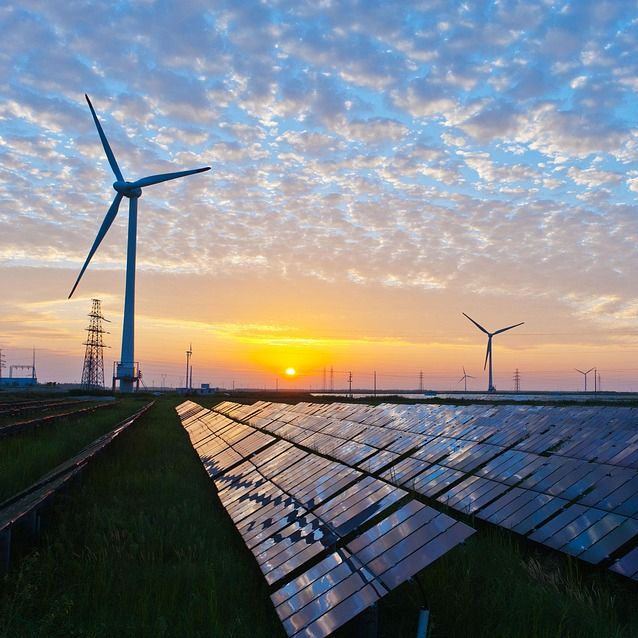Australia is well-known for its vast landscapes and abundant natural resources, but there is something more subtle at work here: the production of renewable energy. As the world steadily shifts to cleaner energy sources, Australia is already making progress in this direction. Our country’s vast desert and coastal regions present a wealth of unrealized potential for renewable energy sources.
In addition to the fact that climate change is a serious problem, there has never been a greater need for solutions focused on sustainability. The people of Australia are prepared and eager to embrace innovative practices that benefit the environment and yield long-term financial gains. It is now more than simply a fad; it is essential for future generations.
Let’s explore the importance of renewable energy in Australia now and how you can contribute to the shift for a brighter future.
The Growing Demand for Renewable Energy in Australia
Currently, Australia has observed an increasing trend in energy consumption from renewable sources. Such a shift is occasioned by the rising concerns in the social and business entities to embrace solutions that will adequately respond to challenges of climate change.
The situation has led to development of interest in cleaner sources of energy since theion environment has been brought into sharp focus. People are already in the process of getting products and services that have the least impact on their environment.
This trend is further facilitated by government incentives that avail funds meant for investment in technologies such as solar and Wind. Australians today are adopting renewable energy not as something they would like to but as what they have to.
In addition, technological developments are increasing the availability of these energy sources in relation to the global market price. Small-scale solar PV deployment can happen through roofing companies or contractors while large-scale solar projects allow adding capacity across states.
The public has become more environmentally conscious; hence industries are shifting towards becoming environmentally friendly. While this momentum increases, a new generation of Australia’s energy sector is emerging.
Advantages of Renewable Energy
Beside the sustainability advantage, renewable energy provides numerous opportunities as will be illustrated below. There is one major benefit, and that is it helps to minimize greenhouse gasses emissions. This serves the purpose of addressing climate change which in the end lays down a foundation for attaining a healthy climate.
Energy Matters Australia is a company focused on providing sustainable energy solutions, offering products and services such as solar panels, energy storage, and renewable energy systems.
Second important advantage is energy independence. Solar and wind power in particular would allow Australia to import less of its fossil fuel supplies. This not only raises the nation’s security level but also cements the price volatility of energy.
Employment in renewable industries is also on the rise too. The shift provides many employment prospects on all skill levels promoting economic development and growth.
In addition, the renewable systems involve less maintenance costs than the conventional power plants. They can work fine within several decades and at the same time supply power from non-renewable resources.
The acceptance of renewable energy sources brings about better health of the public since there are less emissions from burnt fossil fuels. Higher levels of air quality mean reduced levels of respiratory diseases and improved quality of life of groups in the population across regions.
Types of Renewable Energy Sources in Australia
Australia has a plethora of renewable energy systems put in place, thus making it one of the leading nations in green energy generation. Solar power is especial;, because a large portion of the country receives more than adequate amounts of daylight. People in their homes and industries are putting solar inverter appliances whereby through solar panels, light is generated from the sun’s energy.
Wind energy is also very important too. Wind turbines are installed in different terrains though mainly along coastlines and in vast planes. These turbines harness Wind energy in the most efficient manner possible.
Hydropower is also part of the renewable power generation portfolio within the country. Though not as common as solar or wind, there are several Dam structures that harness water flow, properly to produce electric energy as a form of renewable source of energy.
Another interesting prospect that is getting pretty popular these days is biomass. This process is achieved by burning organic materials or undergoing biochemical processes.
It is also possible to classify geothermal as an emerging frontier. Australia has a lot of potential for geothermal energy exploitation because of some of these geographical features.
Obstacles and Potential Solutions for Australia’s Renewable Energy Transition
There are also challenges the adoption of renewable energy for Australia comes with. On this score, there remains one major barrier: the currently entrenched ways of doing business tend to be highly ingrained in relation to fossil fuels. This means that upgrading or replacing such infrastructure requires significantly huge investment and time.
Another problem is in the storage technology. New sources such as solar and wind could not produce power at all times because there are always certain conditions that must prevail. For example, the sun must shine for solar. For a stable supply to support more renewable energy, improvements in battery storage and the electric grid are required.
It is also important to note that regulation can also be an inhibitor. Efficient policies to sustain the renewable energy agenda accompanied by environmental issues will be important for development. Hopefully, cooperation between the governmental institutions, non-governmental organizations, companies, and people will encourage the use of perfect solutions for the definite territories.
This is also true with public acceptance which is also very crucial. Some of the communities might be threatened by changes thinking that renewables might harm them or that they received wrong information about them. For this reason, there is a need for educational campaigns that can explain the gains of these energy sources.
It also follows that when everyone is committed to embracing renewable energy, then the way forward will be more apparent. Australia has enormous potential to push for clean energy solutions but harnessing this will need the efforts of many to address these challenges squarely.





